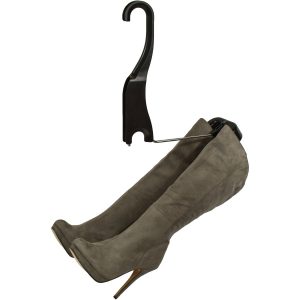 January means we’re in the throes of winter, and that means cold, snow, rain, slush, and ice. (Unless you’re in Australia or on a breezy tropical vacation somewhere. If you are, the rest of us are envying you — and not just a little bit.)
January means we’re in the throes of winter, and that means cold, snow, rain, slush, and ice. (Unless you’re in Australia or on a breezy tropical vacation somewhere. If you are, the rest of us are envying you — and not just a little bit.)
January also means a few things about winter boots:
a. If you don’t have a good pair of winter boots, your poor feet know all about it by now.
b. If that’s the case, or if you’re looking to invest in another pair of boots in addition to the ones you already own, it’s a good time to do some research and shop around. The winter shopping season is nearing its end, meaning that you’ll be able to find some good bargains. Here’s what to look for in a good pair of winter boots, whether it’s a pair you’re going to be wearing every day or on a weekend-long ski holiday somewhere among mountains and filled with snow.
1. WARMTH
Warmth is obvious because it’s the most important. Extremities — meaning your hands, feet, and head — are the most difficult for your body to keep warm when temperatures plunge. So yes, your mom was right: Wear a hat. Get some warm gloves on those hands. And choose the right boots.
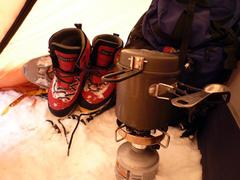 How warm should your winter boots be?
How warm should your winter boots be?
That depends on what you’re going to be doing in them. Boots that you’re going to commute in should not only be warm but also less bulky, so that you can easily climb stairs in and out of subway tunnels, quickly board buses, and walk confidently on sidewalks that may or may have been de-iced properly.
Boots that you’re going to use to hop from the car to your house can be a much less heavy duty. And not too bulky either, so that you can drive safely. But you’ll still want them to keep your feet warm and dry so that you’re not driving around with soggy, cold feet. If you’re going to be shoveling snow, that’s a lot of movement, so a bit less bulk. But you’ll need the warmth.
Finally, there’s winter boots for more stationary activities: Football games, for example — especially for those die-hard fans who still want to support their teams even when temperatures plummet. For these kinds of activities, you can ramp up on the insulation within the boot, and since you won’t be moving around much, less mobility because of more bulk won’t be a factor.
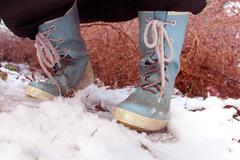
What contributes to a boot’s warmth?
We’ll start from the bottom up. The insole is what’s keeping a cold from seeping upwards into your feet. A good winter boot will thus have an insulated insole. Next, check out your boots’ temperature rating, as many boot manufacturers will assign these to their products. Some boots may be rated as low as -100 degrees Fahrenheit, though most of us probably won’t ever need that kind of boot.
If there’s no rating available, take a look at the lining materials, as various different types of boots will have different linings.
On fashion boots, you’re likely to see linings from shearling wool or faux shearling wool. The real stuff is obviously much warmer and cozier and provides excellent insulation. The faux shearling won’t do much in terms of warmth or insulation, as it’s likely made of some kind of plastic material.
Other boots and that might also include fashion boots, may have thermal materials as their liners. Thinsulate is one such liner, and if you’re looking for boots for very cold weather conditions, you’ll want the liner to contain 400-800 grams of thermal insulation. Anything from 100-400 will work if you live in more moderate climates.
Finally, there are boots with removable linings. These are great for winter hiking, for example, when it’s crucial to dry your boots fast. These are called PAC boots, and their removable linings can be made from a variety of materials ranging from wool to acrylic or polypropylene.
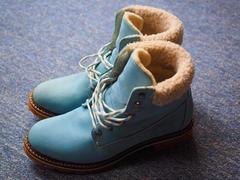 2. COMFORT + FIT
2. COMFORT + FIT
Whether you’re going to be wearing your boots during an hour-long commute that includes lots of walking, shoveling snow for a couple of hours, or spending most of the day running a bunch of chores, the way your boots fit and feel is going to make a world of a difference.
Pay attention to how well the boots support the arch of your foot. Here’s where those insoles we mentioned earlier will come into play because they’re not just keeping your foot warm. The padding in the insoles is what supports your arch, and that, in turn, will help proper walking posture.
Also pay attention to the boot’s lacing, which is the second major factor that determines boot comfort. Boots that lace all the way up will offer the best fit because you’ll be able to lace them to fit your foot, ankle, and leg.
For fashion boots without any lacing, take note of the shaft measurement, which will be presented in inches. This will help you determine whether the widest part of your calf will fit comfortably into the boot’s shaft.
3. WATERPROOFING
 It’s a given that winter boots should be waterproof, right? Not all are, however — especially when we move into the realm of fashion boots. But if, for example, you want your winter boots to be made of leather because you love its look, feel, and breathability, do some proper waterproofing on them yourself to ensure that they won’t let moisture through. Buy a product that’s made for your specific leather type and follow the instructions; do at least a couple of coats before you take your boots out for a spin.
It’s a given that winter boots should be waterproof, right? Not all are, however — especially when we move into the realm of fashion boots. But if, for example, you want your winter boots to be made of leather because you love its look, feel, and breathability, do some proper waterproofing on them yourself to ensure that they won’t let moisture through. Buy a product that’s made for your specific leather type and follow the instructions; do at least a couple of coats before you take your boots out for a spin.
Non-leather boots may often already have waterproofing properties in their materials, but check with the boot manufacturer whether that is definitely the case. And whether or not it is, it’s always a good idea to invest in a waterproofing spray and use it regularly.
Keeping your boots clean will make a big difference in their waterproof-ability. Salt can degrade both leather and manmade materials, so if you come home and have it on your boots, get it off. Use a slightly damp rag on leather boots, and a wet rag on manmade materials. Let your boots dry naturally, and then reapply a waterproofing spray. Same goes for mud, snow, rain — any type of moisture that can dry out or damage boot materials.
4. BOOT STORAGE
The proper winter boots will keep your feet toasty and dry all winter long. But they’re not the easiest things to store and organize, are they? They take up space, they topple over when you try to stand them up straight.
This is where we come in. Because we also love our boots, and we also found it challenging to figure out how to not have a mess of boots in our closets or front hallways.
Our Boot Butler allows you to hang multiple pairs of boots at once. And because our product is so sturdy, you can hang those winter boots on it. They’ll hang in a way so that the insides are open, which is excellent for breathability and ventilation. They won’t crumble, or fall over, or get in the way. And they’re easy to slip on and off at the beginnings or ends of your days.
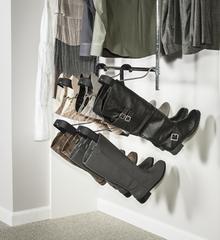 5. CLEANING + CARE
5. CLEANING + CARE
Head on over to our article on winter boot care to learn how to give your winter boots – which work so hard! – the best love and care. That’ll help extend the life of your boots, and ensure they’re in excellent shape whenever you wear them.

